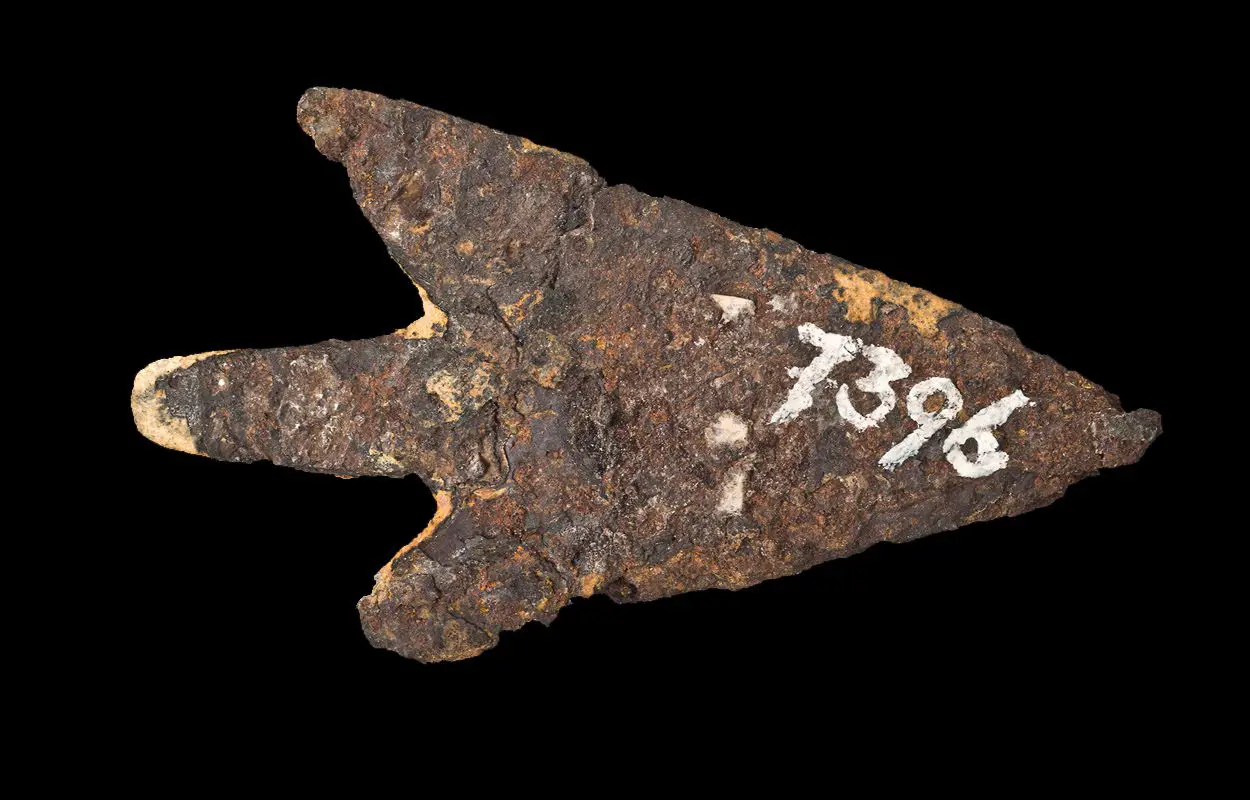A study of archaeological collections from the greater area of Lake Biel in Switzerland has revealed that a Bronze Age arrowhead housed in the Bern History Museum was made from IAB meteoritic iron.
The arrowhead was found during a 19th century excavation of a stilt house settlement at Mörigen in the canton of Bern. The settlement dates from around 900 to 800 BC and was inhabited by people from the Urnfield culture, a late Bronze Age culture of Central Europe.
The site was discovered in 1843 after water levels in Lake Biel dropped. This resulted in amateur excavations taking artefacts out of situ which were placed in private collections.
In 1873, the Bernese government took decisive action to protect the site, by prohibiting private excavations and commissioned a research team to conduct a detailed survey led by Edward Jenner and Edmund Fellberg. The archaeologists found a settlement covering 190 by 120 metres, containing evidence of buildings and bridges, and numerous Bronze Age artefacts.
In a study published in the journal Science Directs, researchers using gamma spectrometry, X-ray fluorescence, and a Muon Induced X-ray Emission (MIXE) analysis, have revealed that the arrowhead from the Mörigen settlement was made from IAB meteoritic iron.
The results of the analysis indicate that the arrowhead is partly made of Aluminium-26 (26Al, Al-26), a radioactive isotope only found naturally in extraterrestrial objects. In addition to the typical meteoritic elements Fe, Ni, Co, Ga and Ge (Cr < 52 ppm, average detection limit), they also found relatively high concentrations of As and Cu, not typical of iron meteorites.
By comparing the chemical composition, the team suggest that the arrowhead’s material was sourced from the Kaalijarv meteorite, an impact event that occurred around 1,500 BC in Estonia and produced many small fragments.
The researchers also suggest that the arrowhead could indicate a network of trade in iron meteorites by 800 BC (or earlier) in Central Europe, which may have been traded over the same routes from the Baltic area as amber.
https://doi.org/10.1016/j.jas.2023.105827
Header Image Credit : Science Directs







